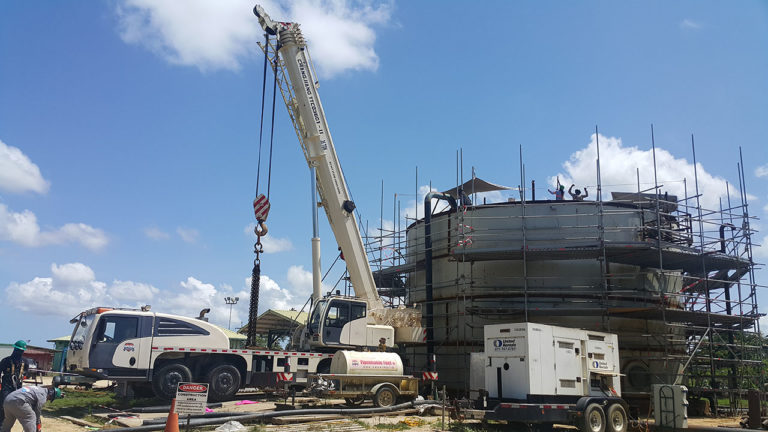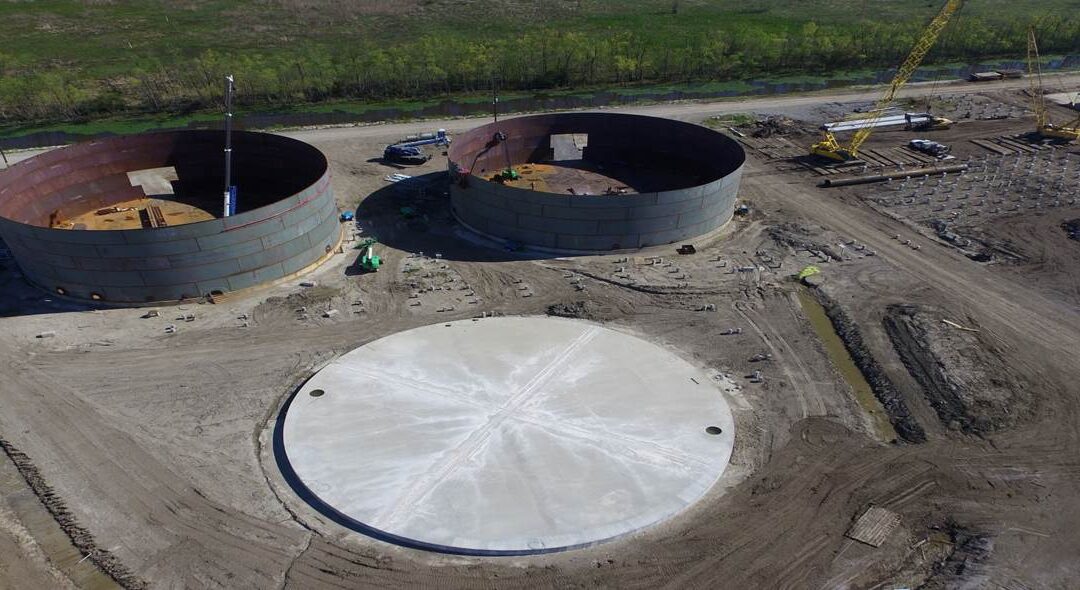Uncover the Key Aspects of API 650 Welding Inspection for High-Quality Industrial Projects
How Welding Inspection Functions: A Comprehensive Guide for Professionals
Welding inspection plays an essential function in guaranteeing the safety and integrity of welded frameworks. It includes an organized approach that consists of both visual inspection and advanced testing techniques. Experts must acquaint themselves with vital requirements and regulations regulating the sector. Understanding the usual defects that can develop throughout welding is vital. This overview will check out these components carefully, offering understandings right into the processes that support top quality and integrity in welding.
Understanding the Value of Welding Examination
While numerous might take too lightly the significance of welding evaluation, it plays a crucial duty in making certain the integrity and security of welded structures. Efficient welding evaluation determines prospective problems and imperfections that can compromise structural toughness and result in catastrophic failures. The inspection procedure includes numerous strategies, such as aesthetic examinations, ultrasonic testing, and radiographic evaluations, each contributing to the overall examination of weld top quality.
In enhancement to guarding the architectural stability, welding assessment guarantees compliance with sector requirements and customer specs. By making certain that welds fulfill needed features and tolerances, evaluations help maintain the reliability and durability of elements in different applications, from construction to aerospace. In addition, an extensive assessment procedure cultivates a society of top quality and liability amongst welders and makers. Eventually, welding examination is not simply a procedural step; it is a crucial method that underpins the security and efficiency of engineered systems throughout diverse fields.
Secret Criteria and Rules in Welding Assessment
The foundation of efficient welding inspection relaxes on adherence to developed requirements and regulations. Various companies, such as the American Welding Culture (AWS) and the American National Specification Institute (ANSI), stated standards that assure high quality and safety in welding practices. Key criteria, such as AWS D1.1 for structural welding and ASME Area IX for pressure vessels, supply detailed standards for welding credentials, procedures, and assessments. Regulatory structures, including those from the Occupational Safety And Security and Health And Wellness Management (OSHA), required safety and security practices and worker securities in welding environments. Conformity with these standards is important for accomplishing constant weld top quality and minimizing the threat of failures. Furthermore, worldwide requirements like ISO 3834 even more boost global consistency in welding inspection practices. Professionals must stay informed concerning these regulations to guarantee that their inspection methods align with industry expectations and legal requirements, thus securing both workers and architectural honesty.
First Preparation and Aesthetic Examination Techniques

Reliable welding assessment begins with a detailed pre-inspection checklist that guarantees all required conditions are satisfied prior to the actual inspection happens. Following this prep work, visual problem recognition plays a crucial function in evaluating weld top quality, enabling assessors to detect issues such as splits or incorrect blend. Together, these strategies form the structure for an effective welding assessment procedure.
Pre-Inspection Checklist
Prior to starting any type of welding inspection, a thorough pre-inspection list is important to assure that all required prep work are finished and that visual examination techniques are successfully employed. Secret elements of this checklist consist of validating the welding procedure specification (WPS), making sure all tools is adjusted and in excellent working problem, and verifying that the examiner has the called for certifications. Furthermore, it is essential to review any previous evaluation records and to examine the workplace for security threats. The inspector ought to likewise verify that all pertinent documents, such as product certifications and assessment records, is easily available. Finishing this list assists to develop a solid foundation for an effective assessment procedure, improving the dependability of the results obtained.
Aesthetic Issue Recognition
A successful visual issue recognition process begins with mindful preliminary preparation and the look here application of established aesthetic assessment methods. Inspectors should assure that the welding location is well-lit and tidy, as ample exposure is important for discovering flaws. A thorough evaluation of the weld joint's surface allows for the recognition of discontinuities, such as cracks, damages, or porosity. Examiners commonly make use of devices like magnifying glasses or mirrors to boost their sight of hard-to-reach locations. Additionally, they should be acquainted with the particular welding criteria and standards pertinent to the project. By sticking to these methods, examiners can effectively determine possible issues, guarding the integrity of the weld and conformity with industry requirements.
Non-Destructive Testing Techniques: A Review
Non-destructive testing (NDT) methods play an essential role in the welding evaluation procedure by making certain the integrity and dependability of welded structures without triggering any kind of damage (API 650 Welding Inspection). These techniques permit examiners to examine the quality of welds while protecting the parts being analyzed. Usual NDT approaches consist of ultrasonic testing, radiographic screening, magnetic fragment screening, and dye penetrant screening, each offering unique benefits
Ultrasonic testing uses high-frequency acoustic waves to spot interior defects, while radiographic testing uses X-rays or gamma rays to picture the interior structure of welds. Magnetic particle testing discloses surface area and near-surface issues by using a magnetic field and iron bits to the weld area. Color penetrant screening highlights surface-breaking imperfections through the application of a colored color. Together, these NDT methods provide essential understandings right into weld top quality, making it possible for professionals to make informed decisions pertaining to safety and compliance in welding applications.
Usual Problems and Their Ramifications
Recognizing typical defects in welded joints is vital for preserving structural stability and security. Different problems can develop throughout the welding procedure, each lugging potential ramifications for the general efficiency of the structure. Porosity, characterized by little gas pockets within the click weld, can damage the joint and compromise its load-bearing ability. Fractures may create as a result of thermal anxiety or incorrect cooling, leading to possible failure under stress and anxiety. Insufficient fusion takes place when the weld metal does not totally bond with the base material, causing weak joints that may not stand up to intended lots. Undercutting, where the base steel is worn down, can additionally decrease the reliable cross-section of the weld. Furthermore, too much reinforcement can develop tension focus that might lead to failing. Recognizing these flaws quickly enables restorative measures, ensuring the longevity and dependability of welded frameworks in essential applications.
Tools and Tools Utilized in Welding Examination
Efficient welding examination counts on a variety of specialized tools and devices to guarantee the high quality and stability of bonded joints. Vital instruments consist of visual inspection devices, such as amplifying borescopes and glasses, which permit inspectors to very closely take a look at welds for surface area problems. Non-destructive screening (NDT) approaches, such as ultrasonic testing, radiographic screening, and magnetic particle screening, are basic for identifying interior imperfections without damaging the material.
Measurement tools, including calipers and weld assesses, aid identify and evaluate measurements conformity with requirements. In addition, solidity testers evaluate the mechanical buildings of bonded joints. Individual safety tools (PPE) is additionally important, protecting the security of examiners while operating in potentially dangerous atmospheres (API 650 Welding Inspection). Each tool serves a particular function, jointly improving the efficiency of welding assessment and adding to the dependability of finished tasks
Regularly Asked Inquiries
What Credentials Are Needed to End Up Being a Welding Examiner?
To become a welding inspector, people generally need pertinent qualifications, such as AWS CWI or CSWIP, in addition to experience in welding procedures, engineering principles, and expertise of assessment methods, safety and security standards, and suitable codes.
Exactly How Typically Should Welding Inspections Be Carried Out?
Welding evaluations must be performed consistently, ideally at great site numerous project phases, including pre-weld, during-weld, and post-weld. Frequency might also rely on market standards, job specifications, and the intricacy of the welds included.
Can Welding Defects Be Fixed After Evaluation?

Yes, welding defects can usually be repaired after assessment. Depending on the seriousness and sort of defect, proper approaches such as reworking or additional welding might be used to restore structural stability and safety and security conformity.
What Industries Require Regular Welding Assessments?

Numerous sectors, consisting of construction, manufacturing, aerospace, and vehicle, call for normal welding evaluations - API 650 Welding Inspection. These assessments assure adherence to safety requirements and quality control, lessening dangers connected with structural stability and functional efficiency in welded components
Just how Do I Pick a Welding Inspection Service?
To choose a welding assessment service, one should think about credentials, experience, qualifications, and market track record. In addition, reviewing consumer evaluations and guaranteeing the service fulfills pertinent requirements can help guarantee quality inspections and dependable outcomes.

While several may ignore the importance of welding inspection, it plays a crucial function in making sure the stability and safety and security of welded frameworks. Trick requirements, such as AWS D1.1 for structural welding and ASME Section IX for stress vessels, provide comprehensive standards for welding assessments, qualifications, and procedures. Reliable welding assessment begins with an extensive pre-inspection checklist that ensures all required problems are satisfied before the actual evaluation takes location. Before commencing any welding evaluation, a detailed pre-inspection list is vital to guarantee that all needed prep work are finished and that aesthetic assessment strategies are effectively employed. Non-destructive testing (NDT) techniques play an important function in the welding evaluation process by making certain the integrity and dependability of welded structures without creating any damage.